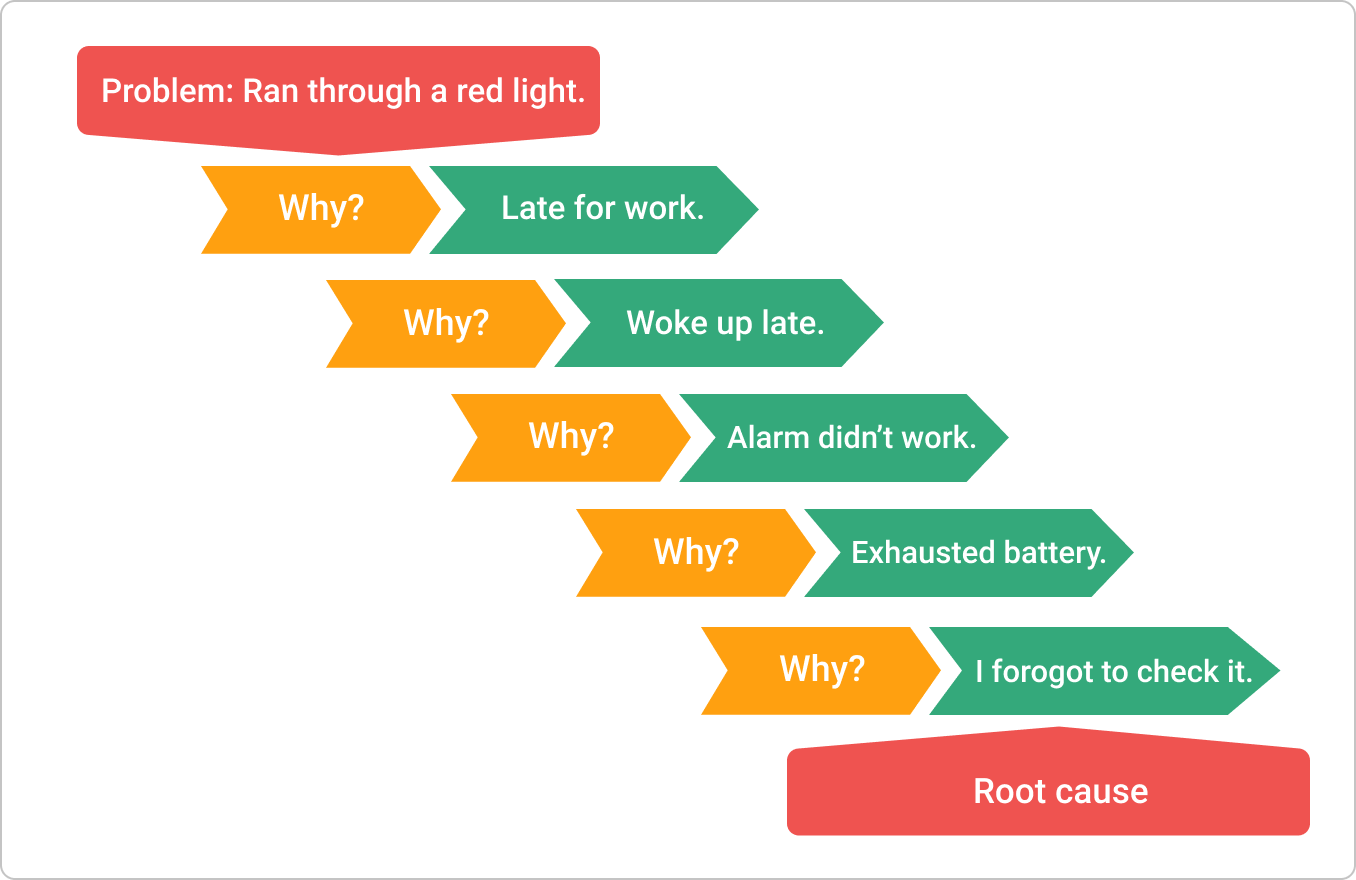The 5 Whys technique is one of the most effective tools for root cause analysis in the Lean management arsenal. Every team faces roadblocks in its daily work. However, using the 5 Whys will help you find the root cause of any problem.
Unpredicted problems may occur in any team or process. However, problems are just symptoms of deeper issues. Fixing a problem quickly may be a convenient solution, however, it doesn’t protect your work process from recurring mistakes. This is why your team needs to focus on finding the root cause and tackle it properly.
The 5 Whys technique is one of the most effective tools for root cause analysis in the Lean management arsenal. Every team faces roadblocks in its daily work. However, using the 5 Whys will help you find the root cause of any problem and protect the process from recurring mistakes and failures.
Origin of 5 Whys
The 5 Whys method is part of the Toyota Production System. Developed by Sakichi Toyoda, a Japanese inventor and industrialist, the technique became an integral part of the Lean philosophy.
“The basis of Toyota’s scientific approach is to ask why five times whenever we find a problem … By repeating why five times, the nature of the problem as well as its solution becomes clear.“ Taiichi Ohno
One of the key factors for successful implementation of the technique is to make an informed decision. This means that the decision-making process should be based on an insightful understanding of what is actually happening on the work floor.
In other words, the root cause analysis process should include people with practical experience. Logically, they can give you the most valuable information regarding any problem that appears in their area of expertise.
5 Whys Analysis in Action
When applying the 5 Whys technique, you want to get to the problem’s essence and then fix it. Actually, the 5 Whys may show you that the source of the problem is quite unexpected.
Often, issues that are considered a technical problem actually turn out to be human and process problems.
This is why finding and eliminating the root cause is crucial if you want to avoid iteration of failures.

Here is an example of applying the 5 Whys:
Problem – We didn’t send the newsletter for the latest software updates on time.
- Why didn’t we send the newsletter on time? Updates were not implemented until the deadline.
- Why were the updates not implemented on time? Because the developers were still working on the new features.
- Why were the developers still working on the new features? One of the new developers didn’t know the procedures.
- Why was the new developer unfamiliar with all procedures? He was not trained properly.
- Why was he not trained properly? Because CTO believes that new employees don’t need thorough training and they should learn while working.
You can notice that the root cause of the initial problem turned out to be something completely different from most expectations.
Furthermore, it is obvious that it is not technological but a process problem. This is typical because we often focus on the product part of the problem as we neglect the human factor.
Therefore, the 5 Whys analysis aims to inspect a certain problem in depth until it shows you the real cause.
Keep in mind that “5” is just a number. Ask “Why” as many times as you need to complete the process and take appropriate actions.
How to Get Started with 5 Whys
The 5 Whys technique may help you achieve continuous improvement at any level of your organization. Here are some basics steps you need to follow.
Form a team
Try to assemble a team of people from different departments. Each representative has to be familiar with the process that is going to be investigated.
By forming a cross-functional team, you are going to receive unique points of view.
This will help you collect enough information to make an informed decision. Be aware that this is not an individual task, and it needs to be executed by the team.
Define the problem
Discuss the problem with the team and make a clear problem statement. It will help you define the scope of the issue you are going to investigate.
This is important because investigating a wide scope problem may be a time-consuming exercise with blurred boundaries. Try to be as focused as possible to find an effective solution in the end.
Ask Why
Empower one person to facilitate the whole process. This team leader will ask the questions and try to keep the team focused. The answers should be based on facts and real data, rather than on emotional opinions.
The facilitator should ask “Why” as many times as needed until the team can identify the root cause of the initial problem.
Advice 1. Don’t ask too many Whys. If you keep going, you may end up receiving tons of unreasonable suggestions and complaints, which is not the purpose. Focus on finding the root cause.
Advice 2. Sometimes there could be more than one root cause. In these cases, the 5 Whys analysis will look more like a matrix with different branches. This may even help you detect and eliminate organizational issues that have permanent negative effects on the overall performance.

